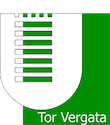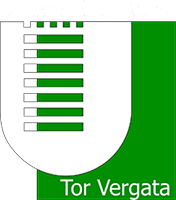Le autotraduzioni di Stefan George dalla “lingua romana” al tedesco
Abstract
Le autotraduzioni di Stefan George dalla “lingua romana”, una lingua letteraria creata dal poeta stesso, alla madrelingua, il tedesco, sono costituite dalle prime cinque Zeichnungen in Grau (Disegni in Grigio) e dalla prima delle Legenden (Leggende). Esse si iscrivono in una fase iniziale di ricerca espressiva (ottobre-novembre 1889) in cui l’autore, per dare vita a un’opera che segnasse un nuovo inizio nella storia della lirica tedesca, cominciò a definire la propria concezione della poesia e a innovare il proprio linguaggio poetico svolgendo un intenso lavoro con i suoni linguistici nel verso.
Con questo contributo si propone uno studio di una delle prime Zeichnungen in Grau: la poesia nella “lingua romana” Una imagen/El imagen tradotta da George in tedesco con il titolo Das Bild. L’analisi dei testi intende innanzitutto illustrare qual è stato il lavoro con i suoni linguistici svolto dal poeta nei due idiomi, con cui egli ha forgiato il proprio idioletto “translinguistico” (Hokenson, Munson, 2007): l’unico stile letterario, cioè, che l’autore o l’autrice che si autotraduce adopera nelle diverse versioni linguistiche delle proprie opere. Per verificare se la lingua romana abbia consentito a George di realizzare un linguaggio caratterizzato da una ‘musicalità’ soprattutto vocalica, che è poi stata al centro del suo interesse nel corso del processo di autotraduzione, viene presa in esame la ricorsività vocalica delle due versioni linguistiche.
Per indagare in che maniera tale ricorsività possa incidere sulla ricezione dei testi, vengono distinte le funzioni da essa svolte sul piano della realtà ‘musicale’ e su quello della realtà poetica.
L’interpretazione, che tiene conto della genesi della poesia ripercorsa sulle diverse stesure nelle due lingue, intende infine chiarire quale ruolo abbia giocato il processo di scrittura esaminato nella definizione della poetica dell’autore.
Stefan George’s self-translations from the “lingua romana”, a literary language created by the poet himself, into his mother tongue, German, are the first five Zeichnungen in Grau (Drawings in Grey) and the first of the Legenden (Legends). They were written in an initial phase of expressive research (October-November 1889) in which the author, in order to produce a work that marked a new beginning in the history of German lyric, started to define his own concept of poetry and to innovate his own poetic language by carrying out an intense work with the linguistic sounds in the verse structure. This contribution is a study of one of the first Zeichnungen in Grau: the poem Una imagen/El imagen in the “lingua romana”, translated by George into German with the title Das Bild. First of all the analysis of the texts intends to illustrate what was the work with the linguistic sounds performed by the author in the two idioms, with which he forged his own “translingual” idiolect (Hokenson, Munson, 2007): the only literary style which the self-translator uses in the different linguistic versions of his or her works. The vocalic recursiveness of the two linguistic versions is taken into consideration in order to verify if the “lingua romana” allowed George to realize a language characterized by a mainly vocalic ‘musicality’, which was then at the center of his interest during the process of self-translation. In order to investigate how this recursiveness can affect the reception of texts, it seems necessary to distinguish the functions it performs on the level of the ‘musical’ reality and on that of the poetic reality. The interpretation, which takes into account the genesis of the poem retraced on the different drafts in the two languages, intends to clarify what role this writing process had in the definition of the author's poetics.







